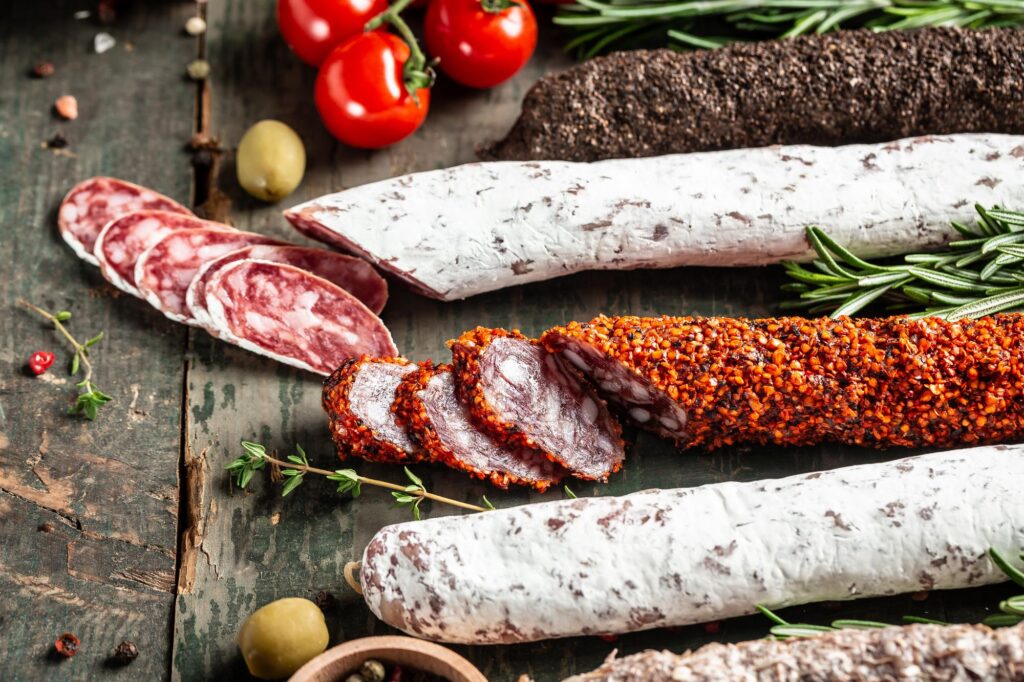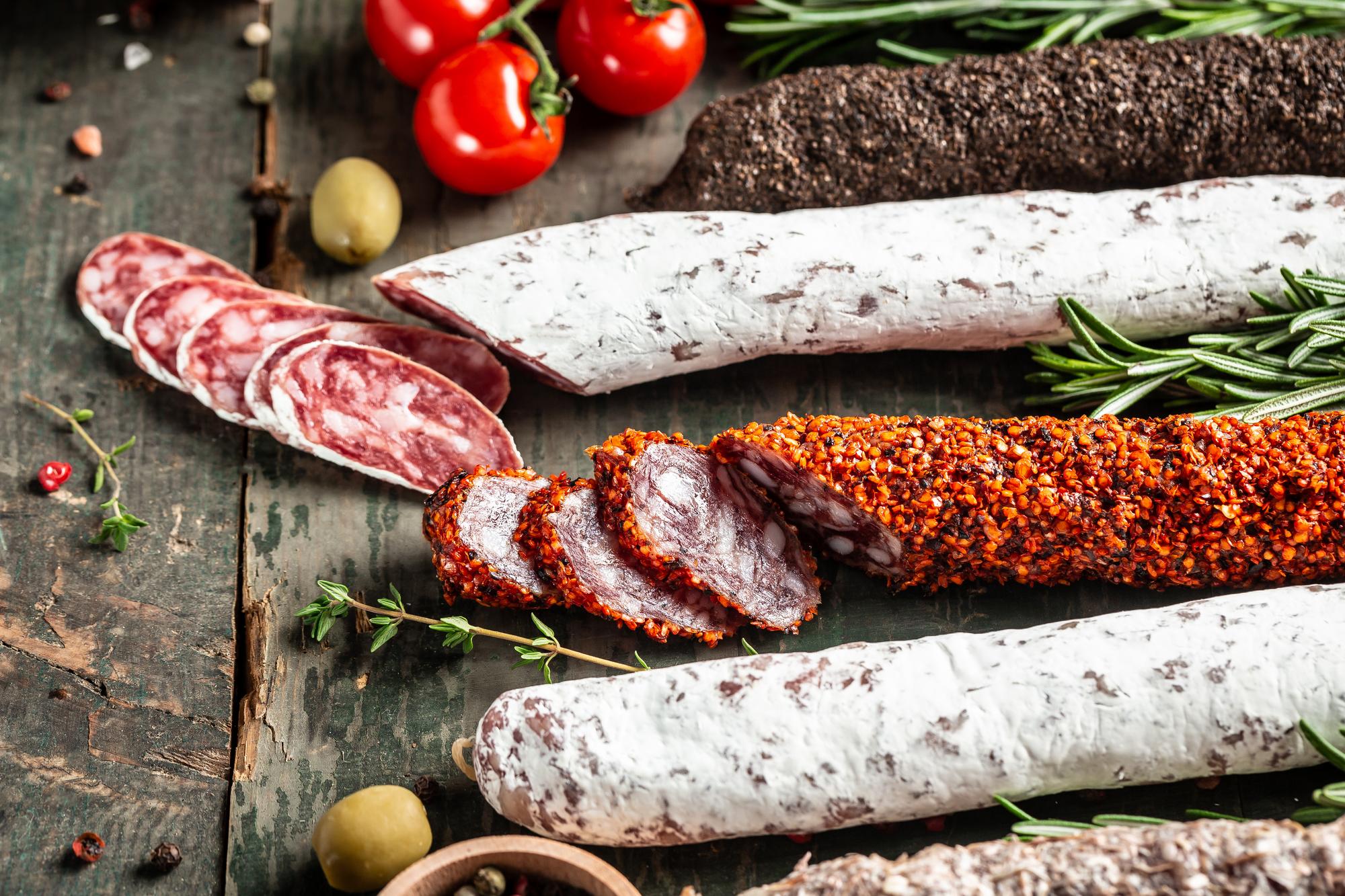
Unveiling the Catalan Fuet Sausage: A Culinary Journey into Spain’s Delicacy
The Catalan fuet sausage, a slender, dry-cured pork sausage, stands as a testament to Catalonia’s rich culinary heritage. This distinctive sausage, characterized by its unique flavor profile and mottled white exterior, has captivated palates for generations. From its humble beginnings as a peasant food to its current status as a gourmet delicacy, the fuet sausage embodies the essence of Catalan gastronomy. This article delves into the history, production, characteristics, and enjoyment of the iconic Catalan fuet sausage, providing a comprehensive guide for both connoisseurs and newcomers alike.
A Glimpse into History and Origins
The history of Catalan fuet sausage is deeply intertwined with the rural traditions of Catalonia. Historically, fuet sausage was a practical and ingenious method of preserving pork, particularly during the colder months. Farmers and families would slaughter pigs in the autumn and winter, and the meat would be cured and dried to ensure a supply of protein throughout the year. This process not only preserved the meat but also imparted unique flavors and textures that are now synonymous with fuet sausage.
The term “fuet” itself originates from the Catalan word for “whip,” referring to the sausage’s long, thin shape. This shape is not merely aesthetic; it plays a crucial role in the curing process, allowing for even drying and preventing spoilage. Over time, the production of Catalan fuet sausage evolved from a simple preservation technique to a refined art form, with each family developing their own secret recipes and techniques.
The Art of Crafting Authentic Catalan Fuet
The production of authentic Catalan fuet sausage is a meticulous process that requires skill, patience, and high-quality ingredients. The primary ingredient is lean pork, often sourced from locally raised pigs. The pork is finely ground and mixed with a blend of salt, black pepper, and other spices, which may include garlic, coriander, and anise. The exact spice blend is often a closely guarded secret, passed down through generations.
Once the meat mixture is prepared, it is stuffed into natural pork casings. These casings are essential for the sausage’s characteristic shape and texture, allowing it to breathe and dry properly. After stuffing, the fuet sausage is hung in a cool, dry environment to cure. The curing process typically lasts for several weeks, during which time the sausage loses moisture and develops its distinctive flavor and aroma.
One of the most recognizable features of Catalan fuet sausage is its mottled white exterior. This is caused by the growth of a beneficial mold, Penicillium nalgiovense, on the surface of the sausage. This mold is not harmful; in fact, it contributes to the sausage’s unique flavor and aroma, protecting it from undesirable bacteria during the curing process. Some producers even cultivate specific strains of this mold to enhance the flavor profile of their fuet sausage.
Sensory Characteristics: Taste, Texture, and Appearance
The Catalan fuet sausage is a feast for the senses, offering a complex interplay of flavors, textures, and aromas. The taste is savory and slightly peppery, with hints of garlic and other spices. The texture is firm and chewy, with a satisfying snap when bitten into. The aroma is earthy and slightly musky, with a subtle sweetness that lingers on the palate.
The appearance of fuet sausage is equally distinctive. The slender, elongated shape is instantly recognizable, as is the mottled white exterior. The interior of the sausage is a deep reddish-purple, with flecks of white fat evenly distributed throughout. The overall appearance is rustic and artisanal, reflecting the traditional methods used to produce it. [See also: Spanish Chorizo: A Deep Dive]
Serving and Enjoying Catalan Fuet Sausage
Catalan fuet sausage is incredibly versatile and can be enjoyed in a variety of ways. It is often served as part of a traditional Catalan tapas spread, alongside other cured meats, cheeses, and olives. It can also be sliced thinly and added to sandwiches or salads, or used as a flavorful ingredient in cooked dishes. [See also: Exploring Spanish Tapas Culture]
One of the simplest and most popular ways to enjoy fuet sausage is to slice it thinly and eat it on its own, perhaps with a piece of crusty bread. The sausage is best served at room temperature, as this allows the flavors and aromas to fully develop. Some people prefer to remove the casing before eating, while others enjoy the slightly chewy texture it provides.
When pairing Catalan fuet sausage with wine, consider a dry red wine with fruity notes, such as a Rioja or a Priorat. The wine’s acidity will help to cut through the richness of the sausage, while its fruity flavors will complement the savory spices. A crisp white wine, such as a Albariño, can also be a good choice, especially when serving fuet sausage as part of a larger tapas spread.
Fuet vs. Other Sausages: What Makes It Unique?
While Catalan fuet sausage shares similarities with other dry-cured sausages, it possesses several unique characteristics that set it apart. Compared to salami, fuet sausage is typically smaller in diameter and has a firmer texture. It also has a more pronounced flavor profile, with a greater emphasis on black pepper and other spices.
Compared to other Spanish sausages, such as chorizo, fuet sausage is less spicy and does not contain paprika. This gives it a milder, more delicate flavor that appeals to a wider range of palates. The presence of the Penicillium nalgiovense mold also contributes to fuet sausage’s unique flavor profile, adding a subtle earthy note that is not found in other sausages.
Where to Find Authentic Catalan Fuet Sausage
Authentic Catalan fuet sausage can be found in specialty food stores, delis, and online retailers. When purchasing fuet sausage, look for products that are made in Catalonia using traditional methods. Check the ingredient list to ensure that the sausage contains only natural ingredients, such as pork, salt, pepper, and spices. Avoid products that contain artificial preservatives or additives.
If you are visiting Catalonia, be sure to sample fuet sausage from local producers. Many small villages and towns throughout Catalonia have their own artisanal producers, each with their own unique recipes and techniques. Visiting these producers and tasting their fuet sausage is a great way to experience the authentic flavors of Catalonia. [See also: A Guide to Catalan Cuisine]
The Enduring Appeal of Catalan Fuet Sausage
The Catalan fuet sausage has endured for centuries, not only as a practical method of food preservation but also as a symbol of Catalan culture and tradition. Its unique flavor profile, artisanal production methods, and versatility have made it a beloved delicacy around the world. Whether enjoyed as a simple snack or as part of an elaborate culinary creation, the fuet sausage offers a taste of Catalonia that is both authentic and unforgettable. The next time you’re looking for a savory and satisfying treat, consider reaching for a Catalan fuet sausage – you won’t be disappointed. It is a testament to the region’s culinary excellence. Its popularity continues to grow, with more and more people discovering the unique and delicious flavor of this traditional Catalan delicacy. The Catalan fuet sausage is more than just a food; it’s a cultural experience.

